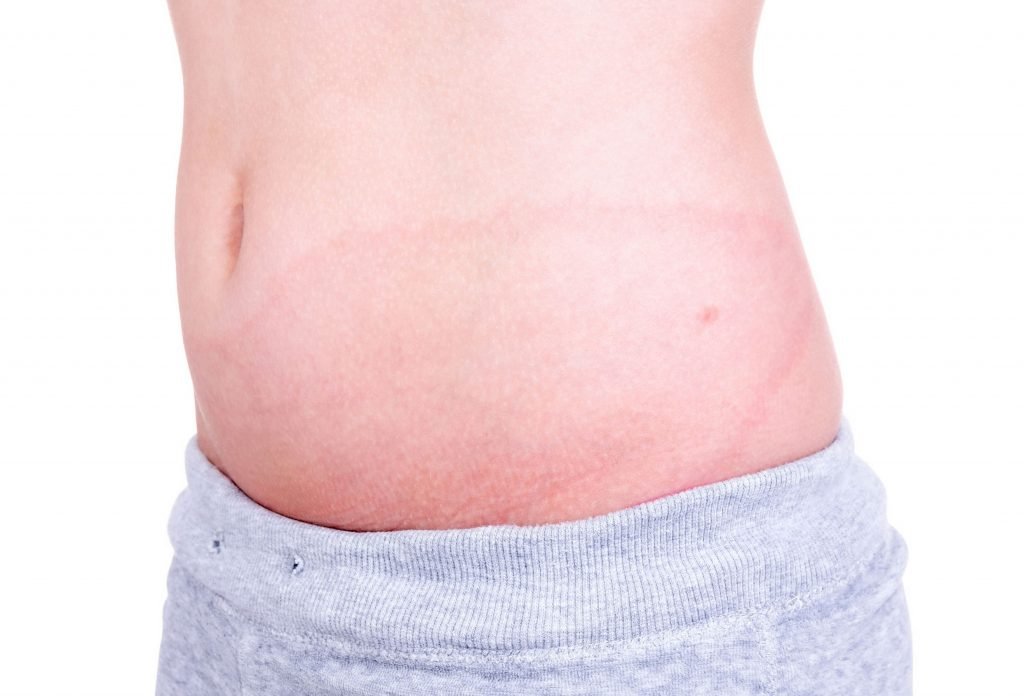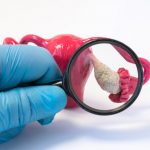Darin Ingels, ND, FAAEM
Tolle Totum
Lyme disease has become the fastest-growing insect-borne infectious disease in the United States, Europe, and Asia. In 2018, we are already hearing about the rising tick population and the expectation that Lyme disease will only become more epidemic than it already is. More than 300 000 Americans and 65 000 Europeans are affected annually by this epidemic – and these numbers seem to climb every year.1,2
The conventional medical understanding of Lyme disease is somewhat limited to those who have acute Lyme disease. In contrast, chronic Lyme disease, or post-Lyme syndrome, has become controversial and has poor consensus among physicians regarding the best way to diagnose and treat it.
An acute case of Lyme disease consists of symptoms that develop within days or weeks of a tick bite and which may be treated relatively easily at the outset. A chronic case occurs when Lyme makes its way deep into the system and keeps recurring, possibly with periods of remission. However, both types of Lyme are misunderstood.
Acute Lyme Disease
The early acute phase of Lyme disease generally occurs 3-30 days after a tick bite. Symptoms may include3:
- Fever
- Chills
- Pounding, throbbing headache
- Persistent, noticeable fatigue
- Numbness and tingling
- Muscle and joint aches
- Swollen lymph nodes
- Facial or Bell’s palsy
- Erythema migrans (EM) rash (“bull’s-eye rash”)
The most well-known and characteristic symptom of the acute phase is the EM, or bull’s-eye rash. It begins at the site of a tick bite, and expands until it reaches a diameter of 12+ inches. Rarely itchy or painful, this rash sometimes clears as it enlarges, such that it resembles a target or “bull’s eye.” The presence of the EM rash is pathognomonic for Lyme disease.
Although a bull’s-eye rash and flu-like symptoms are classic early signs of Lyme, many people never experience either of these. Some people get vague symptoms (or none at all) and may harbor the infection for years without knowing it. And hundreds of thousands of people have the typical symptoms of Lyme without even knowing that they have the disease, until long after it has deeply entrenched itself into their bodies. Lyme disease is called “The Great Mimic” because it resembles numerous other illnesses. As a result, it is not uncommon for physicians to overlook Lyme disease as they attribute symptoms to something else. Lyme disease has been misdiagnosed as chronic fatigue syndrome, fibromyalgia, multiple sclerosis, mononucleosis, Parkinson’s disease, Alzheimer’s disease, and many other disorders.
Chronic Lyme Disease
People suffering from chronic Lyme disease can look clinically different, and may present with symptoms such as3:
- Fatigue
- Abdominal pain and bowel changes
- Memory loss or cognitive impairment
- Numbness or tingling of extremities
- Sensory distortion of skin (burning sensations), especially in hands or feet
- “Wandering” joint or muscle pain
- Light or sound sensitivity
- Dizziness or vertigo
- Sleep disturbances
- Cardiac problems: mitral valve prolapse, heart block, heart palpitations, chest pain
- Balance or coordination problems
- Endocrine disruption: hypothyroidism, irregular menses, etc
The Centers for Disease Control and Prevention (CDC) states that up to 10% of people with acute Lyme disease will go on to develop chronic Lyme disease or Post-Lyme Syndrome4; however, many Lyme-literate physicians feel this number is grossly underreported.
Lyme Testing: Pitfalls of the 2-Tiered System
Adding to the challenge of Lyme disease is making a correct diagnosis. According to the CDC, Lyme disease is a clinical diagnosis, which means it is based on symptoms and other factors rather than solely on a lab test. Lab testing for Lyme disease has been woefully inadequate for decades, due to the poor sensitivity and specificity of the testing itself. Currently, the CDC recommends a 2-tier testing system, starting with a Lyme screen test.5
One study found that in 55 people with known Lyme disease, <46% of them had either IgG or IgM antibodies on their Lyme screen. A good screening test should pick up at least 95% of the people being tested for their condition, according to the College of American Pathologists.6 The Lyme screening test does not meet this criterion. In fact, the Lyme screen test may only pick up about 56% of people who have Lyme disease.7 To make matters worse, the CDC guidelines do not recommend doing a Western Blot when the Lyme screen is negative. Research shows that the Western Blot is more accurate in diagnosing Lyme disease because it looks for very specific antibodies often seen in Lyme disease patients but not found in healthy controls.8
The Western Blot is the second stage of the CDC’s recommended 2-stage testing. This test is also an antibody test, but measures multiple antibodies associated with Borrelia infection. In 40 years of research, we have learned that some antibodies are specific to Lyme, while others are not. The presence of 23, 34, 39 and 93 kd antibodies are strongly associated with exposure to Lyme and may suggest infection.9 But since antibodies can hang around for years, and even decades, the presence of antibodies does not necessarily indicate a current infection.
The Western blot is also highly prone to false negatives, ie, negative for antibodies despite active infection. This occurs because it can take weeks for the body to develop antibodies against Lyme, which is why the CDC does not recommend doing a Western Blot test on anyone whose illness occurred within the previous month. Other labs tests, including PCR testing and direct staining, have poor sensitivity and poor reliability in screening for Lyme disease.
So, the bottom line is that a negative test does not exclude the possibility of having Lyme disease, but a positive test confirms exposure to the organism causing Lyme disease. It is important to evaluate lab testing in conjunction with a patient’s clinical symptoms. An individual could have been exposed to Borrelia and never developed Lyme disease but may still have antibodies in their bloodstream. This is why it is necessary to always consider your patient’s symptoms before starting any treatment.
Conventional Treatment
The conventional medical treatment for Lyme disease is a course of antibiotics for up to 3 weeks after diagnosis. This has been the recommendation of most government, medical, and public health organizations in the United States for almost 40 years. While mainstream infectious-disease doctors do not generally deviate from the CDC recommendations, others feel that the standard 21 days of antibiotic therapy are not enough to defeat Lyme disease. Many doctors who are members of the International Lyme and Associated Diseases Society (ILADS) will use longer courses of antibiotics, both oral and intravenous – for weeks, months, or even years.10 Concurrent use of 3-4 antibiotics is now common.
Most bacteria replicate every 20 minutes, but Borrelia species replicate much more slowly, every 1 to 16 days.11 Since many antibiotics commonly used to treat Lyme disease only work when the organism is replicating (bacteriostatic), they are not effective when the organism is in a dormant state, and therefore would take longer to eradicate the infection. Current guidelines from the CDC only address acute Lyme disease and do not address post-Lyme syndrome at all.
Long-term antibiotic use kills off a large portion of the friendly gut bacteria, which are necessary for maintaining the health of the microbiome and immune system and fighting infection. Long-term antibiotics can also lead to kidney and liver damage, as well as many other harmful side effects.
Although there is evidence that antibiotics can be effective in acute Lyme disease, studies on long-term antibiotic use either show no effectiveness at all or limited benefits that stop when antibiotics are discontinued.
Naturopathic Treatment
In line with the tenets of naturopathic medicine, the treatment of Lyme disease should encompass the whole person, including diet, lifestyle habits, comorbid conditions, immune status, and environmental exposure, in addition to treating active infection. A whole-body approach to Lyme disease addresses many of the underlying factors that keep people with Lyme disease ill.
Diet
Although many diets have been reported to help people with Lyme disease, I have personally found an alkaline diet to help most Lyme patients. This involves eating foods that promote better cellular alkalinity. There are no specific studies on an alkaline diet and Lyme disease, but the few studies published on alkaline diets, in general, have observed health benefits, including reducing inflammation.12 Note that following an alkaline diet does not change blood pH, as has been purported by some individuals.
I recommend eliminating all processed foods, sugar, and coffee, and primarily eating organic fresh vegetables, legumes, and nuts. It is also necessary to limit animal protein to less than 20% of total dietary intake for the week, as animal protein breaks down into acid-forming byproducts. For patients who have difficulty making dietary changes, it may be helpful to have them work with a nutritionist for meal planning and guidance.
Intestinal Health
Research shows the intestinal tract accounts for 70-80% of immune function; thus, maintaining healthy intestinal permeability, balanced microflora, and optimal digestion is essential for overcoming any chronic infection. It is important to ensure proper intestinal motility to prevent dysbiosis and mucosal inflammation, which in turn can disrupt normal intestinal function. Comprehensive stool analysis and/or organic acid testing can help provide insight into specific areas of intestinal function that are imbalanced. The treatment in this area should be specific to your patient, but I often consider herbs and nutrients that help promote better motility, reduce inflammation, rebalance gut microflora, and treat overgrowth of pathogenic microbes. Some specific considerations include magnesium salts, probiotics, glutamine, curcumin, and fish oils.
Treat Active Lyme Infection
Several herbal protocols have been used to treat both acute and chronic Lyme disease, many of which I have used successfully in my clinical practice. I have also found that herbs are generally better tolerated than antibiotics, and come with fewer adverse side effects. The 2 herbal protocols I have used the most are Dr Zhang’s Modern Chinese Medicine protocol and a modified form of Dr Lee Cowden’s protocol.
Dr Zhang is a Chinese medical doctor and licensed acupuncturist in New York City who developed a series of Chinese herbal formulas to help eradicate Lyme, boost immune function, improve circulation, and modulate autoimmunity. When I myself had Lyme disease, his protocol helped me to get off antibiotics and dramatically improve my health. Dr Lee Cowden, a cardiologist in Dallas, TX, prior to retirement, developed a series of liquid tinctures made from plants from the Amazon rainforest in South America. His protocol has been studied at the University of New Haven by Dr Eva Sapi and has been found to be more effective than antibiotics.13 His protocol also helps eradicate infection, reduce inflammation, and improve detoxification.
I have also used protocols from Stephen Buhner, Byron White, and a specialty herbal formula company with unique products. I prefer the other protocols, as I’ve observed greater clinical effectiveness with Dr Zhang’s and Dr Cowden’s protocols; I’ve also seen fewer die-off reactions using these protocols, which are common with any Lyme treatment.
Lifestyle & Environmental Control
In addition to taking antibiotics or herbs to treat the active infection, it is also important to manage lifestyle habits than can undermine your patient’s immune system, making it harder to overcome an infection. Getting good-quality sleep, getting plenty of exercise (as tolerated), and managing stress all play significant roles in immune system function. I encourage anyone with Lyme disease to eliminate from their home and work environment all toxins and toxicants that are known immune disruptors, in order to optimize their immune function.
One of the biggest external factors influencing Lyme disease is mold. Mycotoxicity and mold allergy can cause symptoms that are almost identical to Lyme disease, and many people with mold problems are unaware of their exposure. I highly recommend Lyme patients have their home tested for mold using spore-trapping and ERMI (Environmental Relative Moldiness Index) to help identify hidden sources of mold, so that it can be remediated if present. Additionally, urine mycotoxin testing or mold allergy testing can help establish whether mold is contributing to one’s health issues.
Immune Modulation & Detoxification
Research shows that Lyme disease can trigger an autoimmune reaction against certain neurological proteins, which may account for many of the symptoms of post-Lyme syndrome. Therefore, therapies that help modulate the immune system are ideal for correcting immune dysfunction. I have used low-dose immunotherapy (LDI) successfully with hundreds of my Lyme patients. Developed by Ty Vincent, MD, LDI uses homeopathic dilutions of a Lyme nosode to downregulate Th2 responses to Lyme, essentially “turning off” the autoimmune reaction to Borrelia spp. This isopathic approach has helped numerous Lyme patients overcome their symptoms. To learn more about how to do LDI, please visit progressivemedicaleducation.com.
Other forms of immunotherapy, such as sublingual immunotherapy (SLIT) can help modulate regulatory T cells (Tregs) against mold, pollen, dust, or foods, and lower the total body immune burden.14 I have found this to be a useful adjunctive therapy in treating Lyme disease, especially in those with a history of allergies prior to being infected with Lyme.
Detoxification is a limiting obstacle for many chronic Lyme patients. Although some patients are genetically predisposed to being slow metabolizers, many naturopathic therapies can still help promote better detoxification and elimination. Research shows infrared sauna can help eliminate toxic metals and chemicals stored in the tissues and organs.15 The temperature and length of treatment should be modified for each person according to what they can tolerate, but regular sauna therapy can improve many Lyme symptoms.
I also highly recommend colon hydrotherapy, for many of the same reasons that I recommend sauna therapy. It is an effective way to promote better bowel function and improve motility and elimination. I have had some Lyme patients that failed every therapy they tried except colon hydrotherapy, which helped them improve. I recommend 1-2 sessions per week for the first 4 weeks and to then adjust the schedule based on clinical response.
Summary
Early detection and treatment of Lyme disease gives your patient the best chance of recovery without future complications. Many naturopathic therapies can be as or more effective than conventional antibiotic therapy, as antibiotic therapy only addresses eradication of the organism and fails to address underlying immune, autoimmune, and detoxification dysfunction. Lyme disease is a complex illness with more than 100 associated symptoms, and its prevalence continues to rise. Most naturopathic physicians in North America are likely to see Lyme patients in their practice at some point, and they are well suited, in general, to treat Lyme. Following basic naturopathic principles, along with some understanding of Lyme-specific protocols, can greatly improve the health of Lyme patients and help them to overcome their illness.
References:
- Asher C. Lyme disease–carrying ticks are now in half of all U.S. counties. January 18, 2016. Science Magazine. Available at: http://www.sciencemag.org/news/2016/01/lyme-disease-carrying-ticks-are-now-half-all-us-counties. Accessed December 10, 2017.
- Hubálek Z. Epidemiology of lyme borreliosis. Curr Probl Dermatol. 2009;37:31-50.
- Centers for Disease Control and Prevention. Signs and Symptoms of Untreated Lyme Disease. Last updated October 26, 2016. CDC Web site. https://www.cdc.gov/lyme/signs_symptoms/index.html. Accessed December 10, 2017.
- Melia MT, Auwaerter PG. Time for a Different Approach to Lyme Disease and Long-Term Symptoms. N Engl J Med. 2016;374(13):1277-1278.
- Centers for Disease Control and Prevention. Two-step Laboratory Testing Process. Last updated March 26, 2015. CDC Web site. https://www.cdc.gov/lyme/diagnosistesting/labtest/twostep/index.html. Accessed December 11, 2017.
- Bakken LL, Callister SM, Wand PJ, Schell RF. Interlaboratory comparison of test results for detection of Lyme disease by 516 participants in the Wisconsin State Laboratory of Hygiene/College of American Pathologists Proficiency Testing Program. J Clin Microbiol. 1997;35(3):537-543.
- Stricker RB, Johnson L. Lyme wars: let’s tackle the testing. BMJ. 2007;335(7628):1008.
- Ma B, Christen B, Leung D, Vigo-Pelfrey C. Serodiagnosis of Lyme borreliosis by western immunoblot: reactivity of various significant antibodies against Borrelia burgdorferi. J Clin Microbiol. 1992;30(2):370-376.
- Brenner C. Understanding the Western Blot. Revised September 1996. Available at: https://www.lymedisease.org/wp-content/uploads/2014/08/Image13-link-pdf-brenner.pdf. Accessed December 11, 2017.
- Cameron DJ, Johnson LB, Maloney EL. Evidence assessments and guideline recommendations in Lyme disease: the clinical management of known tick bites, erythema migrans rashes and persistent disease. Expert Rev Anti Infect Ther. 2014;12(9):1103-1135.
- Jutras BL, Chenail AM, Stevenson B. Changes in bacterial growth rate govern expression of the Borrelia burgdorferi OspC and Erp infection-associated surface proteins. J Bacteriol. 2013;195(4):757-764.
- Schwalfenberg GK. The alkaline diet: is there evidence that an alkaline pH diet benefits health? J Environ Public Health. 2012;2012:727630.
- Sapi E, Kaur N, Anyanwu S, et al. Evaluation of in-vitro antibiotic susceptibility of different morphological forms of Borrelia burgdorferi. Infect Drug Resist. 2011;4:97-113.
- Cappella A, Durham SR. Allergen immunotherapy for allergic respiratory diseases. Hum Vaccin Immunother. 2012;8(10):1499-1512.
- Genuis SJ, Birkholz D, Rodushkin I, Beesoon S. Blood, urine, and sweat (BUS) study: monitoring and elimination of bioaccumulated toxic elements. Arch Environ Contam Toxicol. 2011;61(2):344-357.
Image Copyright: <a href=’https://www.123rf.com/profile_peter1977′>peter1977 / 123RF Stock Photo</a>
 Darin Ingels, ND, FAAEM, is a respected leader in natural medicine, with more than 26 years of experience in the healthcare field. He is board-certified in Integrated Pediatrics and is a Fellow of the American Academy of Environmental Medicine. Dr Ingels has been published extensively and is the author of The Lyme Solution: A 5-Part Plan to Fight the Inflammatory Autoimmune Response and Beat Lyme Disease – a comprehensive natural approach to treating the disorder. He specializes in Lyme disease, autism, and chronic immune dysfunction. He uses diet, nutrients, herbs, homeopathy, and immunotherapy to help his patients achieve better health.
Darin Ingels, ND, FAAEM, is a respected leader in natural medicine, with more than 26 years of experience in the healthcare field. He is board-certified in Integrated Pediatrics and is a Fellow of the American Academy of Environmental Medicine. Dr Ingels has been published extensively and is the author of The Lyme Solution: A 5-Part Plan to Fight the Inflammatory Autoimmune Response and Beat Lyme Disease – a comprehensive natural approach to treating the disorder. He specializes in Lyme disease, autism, and chronic immune dysfunction. He uses diet, nutrients, herbs, homeopathy, and immunotherapy to help his patients achieve better health.




